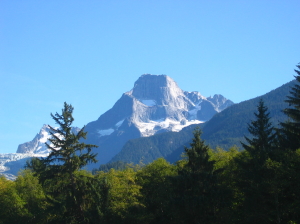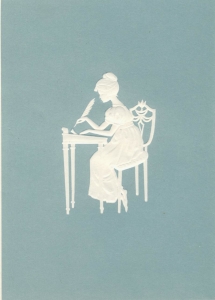Bring Your Family History Writing to Life with Scenes

A surveyor used rich details to describe his experiences of harsh winter conditions in Bute Inlet in the 1860s. Later writers draw upon these rare descriptive passages, and their own experiences in this locale, to recreate moving scenes.
We have a pact with our readers to present the truth—but we also want to engage both their minds and their hearts. And therein lies one of the greatest challenges in the nonfiction writers’ creative process. To write scenes—with in-the-moment action—we need small, glowing details that can be hard to find in our research materials. In writing about the distant past, in particular, the best we can usually achieve are approximations of scenes and half-scenes.
“I fear [film and fiction] might overtake us…,” writes Adam Hochschild in an essay in Telling True Stories, “yet they force us to work harder to make the reader see the events in our narratives.”
What is a Scene?
Strong scenes, whether observed or reconstructed by the author, must include:
• atmosphere (sounds, smells, texture);
• dialogue (a full blown scene in fiction takes place mainly within dialogue, which is rarely possible in historical nonfiction, unless you have an interviewee to supply quotes. Most of us rely on short extracts from letters and journals as a dialogue stand in);
• emotion (gleaned from your interviews or your own responses to a related season or the place as it is now);
• action (something pivotal to your story is taking place)
In your research phase collect telling details and note possible scene material. The colours, sounds, smells and emotion described by a participant may seem inconsequential to the big story, but this is what will make your narrative spring to life. A surveyor’s account of the search for a new route to BC’s Cariboo Gold Rush provides exceptional detail. He said–for instance–that a frozen river was littered with boulders glazed over with ice, making them look like crystal balls. Details such as this are gems for scene-building.
 The following scene from Claire Tomalin’s biography (ttp://literature.britishcouncil.org/claire-tomalin) of Jane Austen draws upon a neighbour’s diary (which she cites earlier) and the author’s knowledge of the time and place:
The following scene from Claire Tomalin’s biography (ttp://literature.britishcouncil.org/claire-tomalin) of Jane Austen draws upon a neighbour’s diary (which she cites earlier) and the author’s knowledge of the time and place:
On 5 April, after a harsh, dark morning, the sun came out. Little Jane was well wrapped in shawls, her mother put on her pelisse and an extra shawl or two for herself, and the family processed up the lane to the church, with its great yew tree in the graveyard in which the key was kept, its ancient bells, and its two stone heads, one of a man, one of a woman, carved on each side of the pointed arch through which you entered.
Where to Find Scene Building Materials
In addition to traditional research sources, you can gather your own responses to a place and time as fodder for scenes.
• Look at period artifacts and read about lifestyle, clothing, and food.
• Well researched historical documentaries like The Victorian Farm http://www.bbc.co.uk/programmes/b00grv47/episodes/guide or others in this BBC series are valuable.
• A visit to the place where the event took place, if not in person then through documentaries or the internet, is vital.
• Your experiences of a similar situation will add to your portrayal. Maybe the piece you’re writing about involved a deep snowfall? Your writing will reflect your responses to the crunch of snow underfoot, the blue glow at twilight, the thick silence.
Be wary as you experiment with writing scenes and half scenes. There’s a temptation to cross the line into fiction, based upon your well informed speculation. If you cross that line include disclaimers like “must have,” or “might have.” Your readers will recognize your honesty and read on with the assurance you’ll hold true to the facts.
And here’s a final caveat: If you write a few splendid scenes, as in Tomalin’s biography, try to sustain it throughout at intervals—so as not to disappoint readers.
Watch for more posts on this important subject in future!
